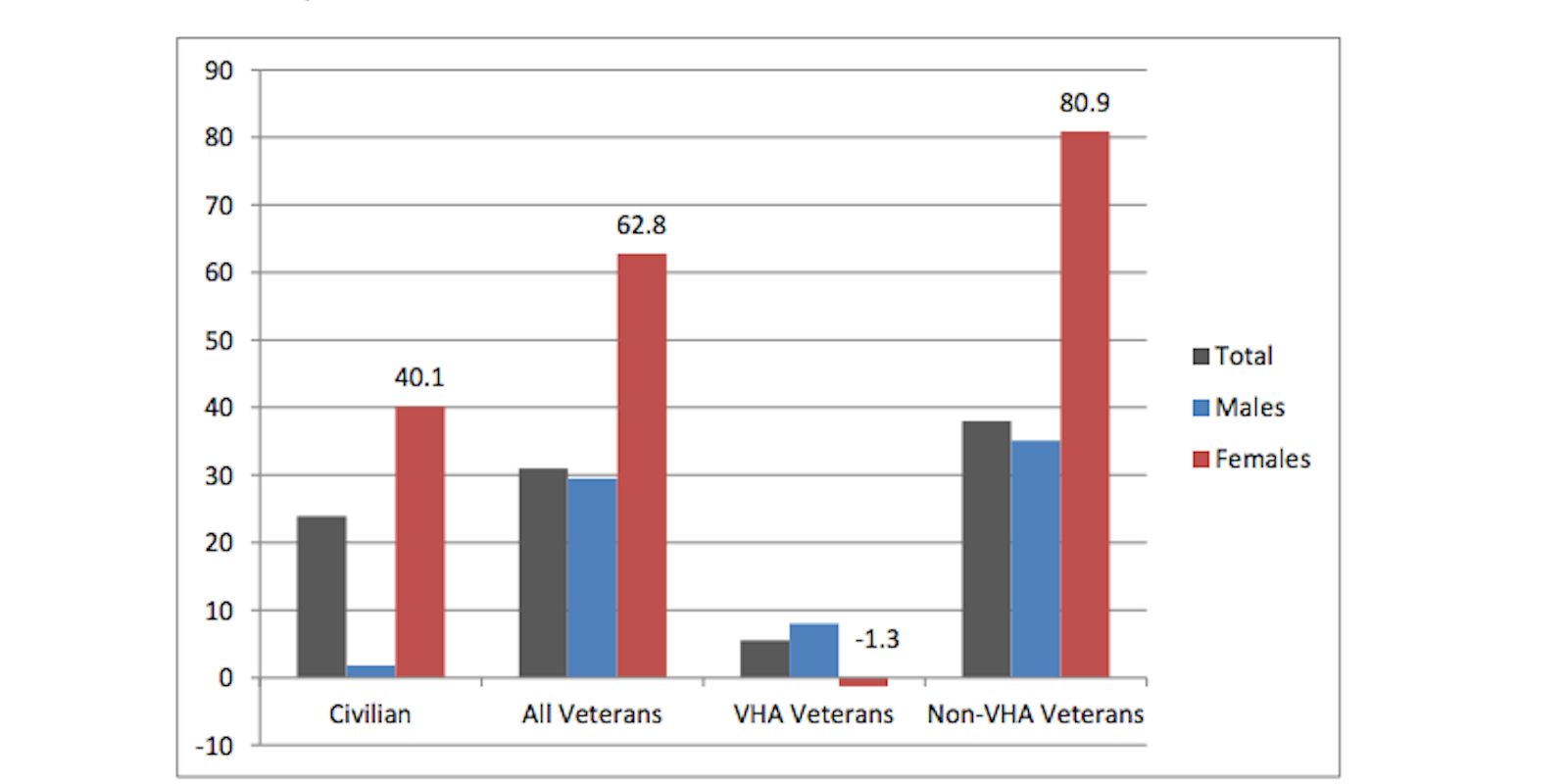According to newly released statistics from the U.S. Department of Veteran Affairs (VA), a female veteran is 2.5 times more likely to commit suicide than a non-veteran American adult woman.
This U.S. veteran suicide statistics report was released Friday evening by the VA. The report analyzed suicide data for all 50 states, looking at the cross-sections of age and gender as well as the most common suicide methods.
Among the top findings of the report:
- The highest rate of veteran suicides occur in Western states—most happen in the heaviest populated areas in the country.
- 65 percent of all veterans who committed suicide were 50 years or older.
- The female veteran suicide rate is 250 percent higher than that for non-veteran females.
“These findings are deeply concerning, which is why I made suicide prevention my top clinical priority,” said VA Secretary David J. Shulkin. “I am committed to reducing Veteran suicides through support and education. We know that of the 20 suicides a day that we reported last year, 14 are not under VA care. This is a national public health issue that requires a concerted, national approach.”
The VA said this report was part of a comprehensive examination of more than 55 million records between 1979 and 2014. This report will be used to develop and evaluate suicide prevention programs across every state in the U.S.
“Every Veteran suicide is a tragic outcome,” The VA said in one of the facts sheets of the report. “Regardless of the numbers, one Veteran suicide is too many. VA is leading national efforts to understand suicide risk factors, develop evidence-based intervention strategies, and provocatively identify and care for Veterans who are in crisis or at a risk for suicide.”
Other key findings in the report:
- In 2014, an average of 20 veterans died by suicide every day.
- In 2014, about 67 percent of all veteran deaths by suicide were the result of firearm injuries.
- Behind firearm injuries, poison is the second most common method.
- From 2001 to 2014, the suicide rate among all veterans increased by 31.1 percent.
The VA advised veterans who are in crisis, having thoughts of suicide, or people who know a veteran in crisis to call the Veterans Crisis Line at 800-273-8255. This line gives confidential support around the clock. There is also the option to chat online or text 838255 for help.’
With the shocking statistics of female veteran deaths by suicide, the VA has also made efforts to cater to female veterans by developing the Women Veterans Call Center, a free resource to call or chat anonymously with online. The center receives on average 80 calls per day and makes 1,000 daily calls to women veterans. The call center is available Monday through Friday 8am-10pm ET and Saturdays 8am-6:30pm ET at 855-829-6636.
The VA partnered with the U.S. Department of Defense to develop a suicide prevention campaign, Be There, to support veterans.
This massive report with shocking statistics comes in the middle of suicide prevention month. The VA is working with other organizations across the country to raise awareness of suicide prevention and mental health resources.
Not sure how to support a Veteran in crisis? Join us 9/20 at 2 p.m. on @AMVETSNational FB page. #SuicidePrevention https://t.co/puiVekCUgT pic.twitter.com/w2sdRBETqu
— Veterans Affairs (@DeptVetAffairs) September 19, 2017
On Wednesday, the VA is hosting a Facebook Live event, “From Service to Success,” to educate the public on small actions that can be taken to support veterans. On social media, the hashtag #Bethere4Veterans is being used by organizations and people across the country to spread awareness about the issue.
“We can all play a role in preventing suicide and it doesn’t require a grand gesture of complicated task,” the VA said on its suicide prevention website. “Your actions can help someone going through a tough time to feel less alone.”
Click here to view the full report.
For more information about suicide prevention or to speak with someone confidentially, contact the National Suicide Prevention Lifeline (U.S.) or Samaritans (U.K.).
H/T Foreign Policy


